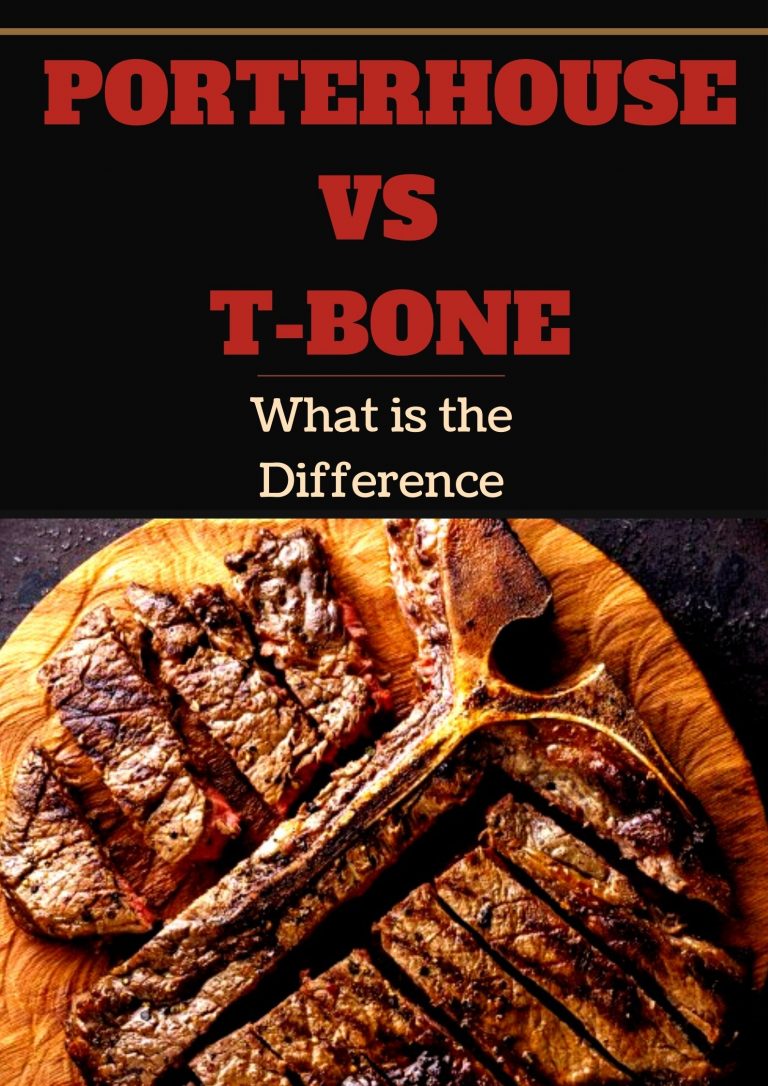Green Mussels vs Black Mussels, What Is The Difference?
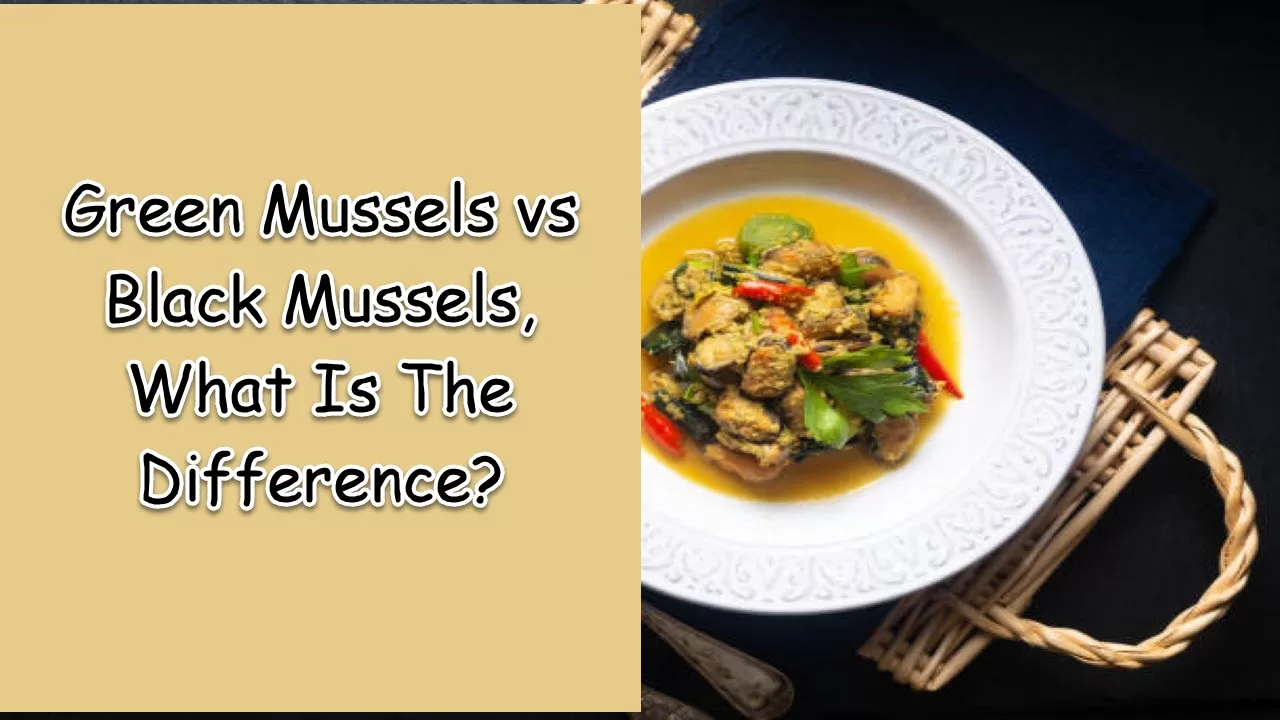
It may be an unlikely situation for most of us but try to picture this: you are craving some seafood and “steamed mussels” on the menu caught your eye. However, you were given two choices, green mussels or black mussels. Which one would you choose? After all, what might be the difference?
Seafood is a global delicacy served to and loved by people around the world for being both delicious and fresh whilst also being packed with essential nutrients necessary for our overall wellness.
Mussels, in particular, are a popular favorite because of their availability, price, and richness in the Omega-3s, EPA and DHA.
This bivalve mollusk that can be found in both saltwater and freshwater habitats comes in plenty of varieties but the more familiar types may be black mussels or green mussels (also known as green-lipped mussels).
Because of the large variety of mussels, picking the best type of mussel is quite debatable.
This brings us back to our initial question. If you were given the chance to choose either green or black mussels, which mussel would you choose? To answer this, we must dive into what differs both mussels from each other. Is there really much of a difference? Is one better than the other in availability, affordability, or flavor?
Let’s find out!

Green Mussels Vs Black Mussels
Characteristic
The first thing you need to understand in terms of green mussels vs black mussels is their characteristics. Here’s a quick overlook of their difference:
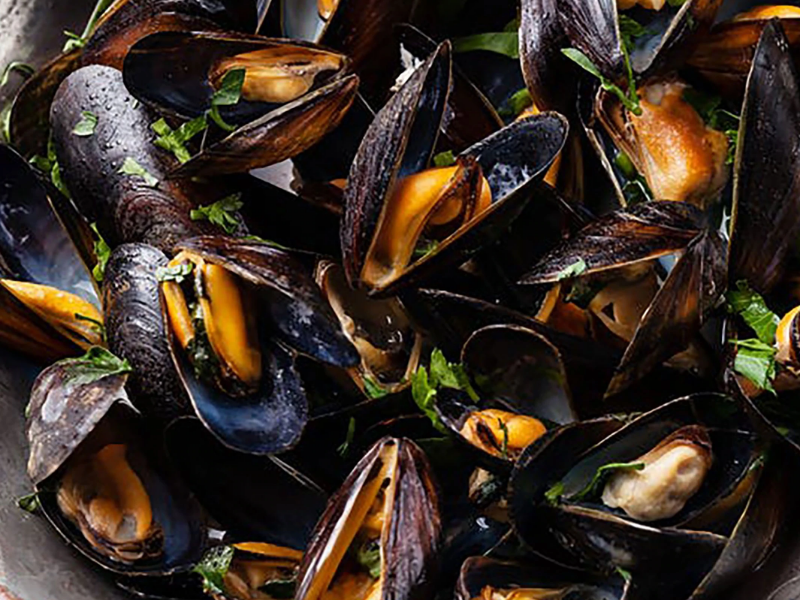
Black Mussels
The term “black mussel” refers to various mussels, which include the following:
- Choromytilus meridionalis (native to South Africa)
- Mytilus galloprovincialis (Mediterranean mussel)
- Mytilus trossulus (native to the North Pacific, Arctic, and North Atlantic oceans)
Black mussels are easily identifiable because of their unmistakably black shell. Don’t confuse black with blue mussels. Although they may both look black, blue mussels do have an obvious hint of bluish hues on the shell.
Black mussels average around 2.5 inches in size (depending on the region it is from) and have the traditional wedge or pear shape that most muscles have.
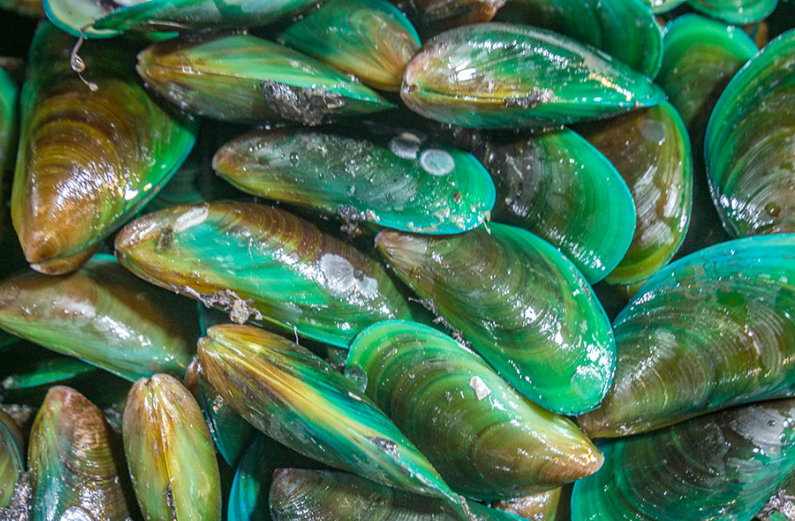
Green Mussels
New Zealand green-lipped mussels (Perna canaliculus) are bivalve mollusks in the Mytilidae family. They are also called New Zealand mussels, green mussels, kuku, and kutai. As a cultivated native species, green mussels are economically important in New Zealand.
Green mussels are equally easy to identify because of their beautiful gray shells with a green lip (which is why they are also often called green-lipped mussels).
Like black mussels, green mussels are also wedge-shaped, however, they are noticeably larger as they can average around 6 inches.
Availability
Which ones are more common, black or green mussels? Let’s take a look as there are fresh mussels, wild mussels, and farmed mussels.
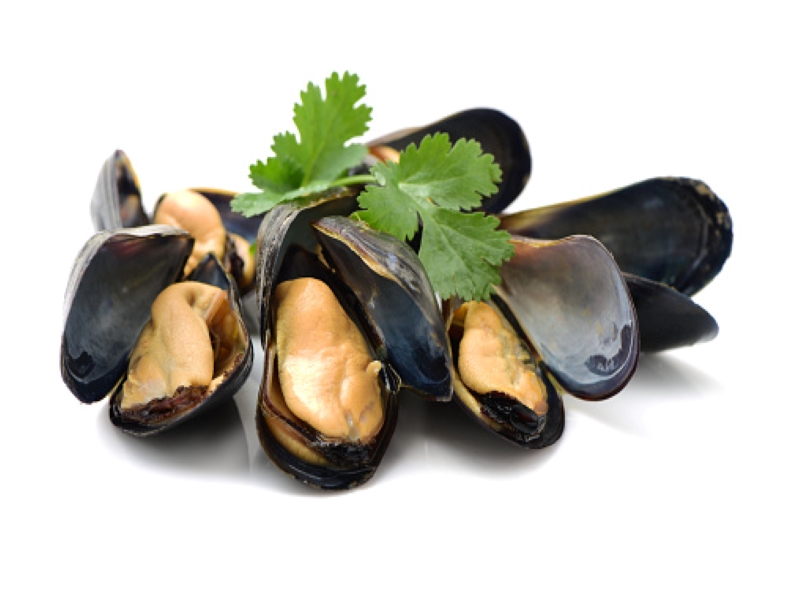
Black Mussels
When someone mentions mussels, most probably what comes into mind are black mussels. They are undoubtedly the most common and quintessential mussel species. They are not just commonly found everywhere, but also throughout the year.
The main reason black mussels are more common is that they are the most preferred type of mussels for farming. They can easily be grown and multiplied.
Black mussels are generally cultivated and collected in their natural habitat by letting the mussels grow along suspended ropes. Mussels develop onto the rope that dangles into the ocean from a pole and they are harvested by hand or through machinery.
You can buy mussels in different forms: fresh or frozen, with and without shell, half-shelled, canned, or pickled. You can even buy marinated mussels.
No matter where you are, in China or South Africa, or even the Arctic, you can still find and enjoy this delicious seafood.
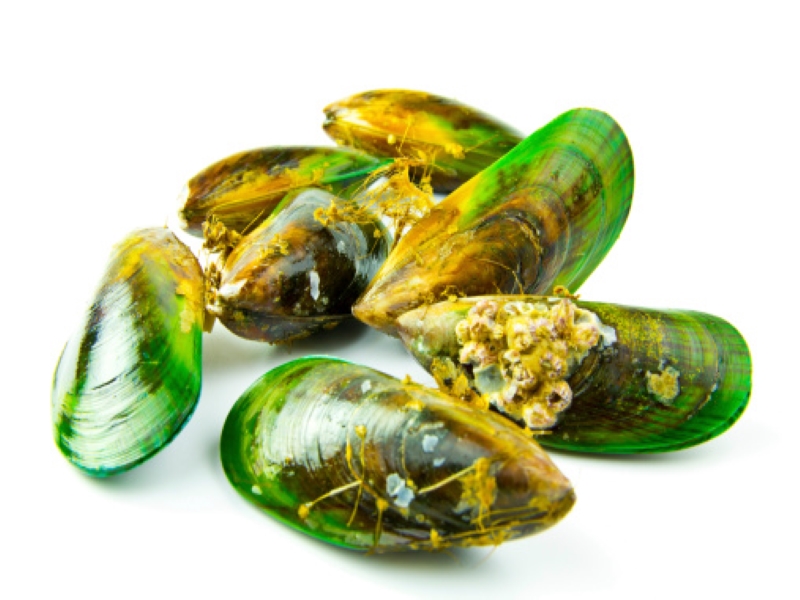
Green Mussels
Green mussels are significantly less known compared to black mussels since they are not as common and easy to find because of their seasonality. They are also natively found in the robust, nutrient-rich waters off the eastern coast of New Zealand and the Pacific rim (North and South America’s western shores), but numerous countries, including India, have begun farming them.
In New Zealand, green-lipped mussels are essentially farmed the same way as black mussels are. However, many countries have started to cultivate these mussels locally because of their nativity to New Zealand.
In their case, the rules and regulations in farming green-lipped mussels are quite stringent, and they constantly monitor the mussels since, outside the waters of New Zealand, these mussels must be raised in high-quality water and feed.
Despite this though, green mussels can still be bought fresh or frozen, and with, without, or even just half shelled in many countries like black mussels.
Affordability
It’s true that when it comes to food, budget plays a role. If you’re trying to determine which one is more affordable, let’s take a look.
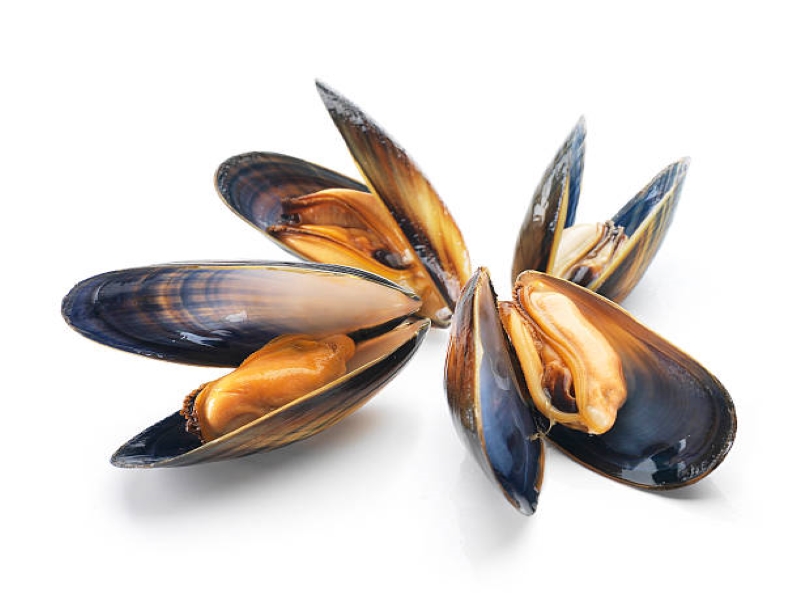
Black Mussels
Because black mussels can be easily cultivated and harvested almost anywhere and any season, black mussels are quite cheap and very affordable in most countries.
Generally, you can buy fresh black mussels for around $5-$6 per pound. However, prices may vary depending on your region.

Green Mussels
Since green mussels are less common because they are native to New Zealand and are more costly to farm outside New Zealand, they tend to be more expensive than black mussels.
In addition to this, green mussels are also seasonal and relatively larger in size. Thus, their price is higher than that of black mussels. However, green-lipped mussels are still very affordable, selling for about $6-$8 per pound (prices may also vary depending on your region).
Flavor
Choosing the type of mussel greatly depends on its taste, texture, and flavor. Here’s what you need to know about mussels taste.

Black Mussels
Black mussels have a comparatively stronger umami flavor than other species of mussels. They may be a little sweet, slightly saltier, and they have quite a lingering fishy taste. These different tastes, however, work together to create such a boldly delicious and fresh flavor which is why people love these mussels.
Black mussels are less chewy than green mussels, which is a plus. When cooked, they become very tender and soft yet firm.
Black mussels are best steamed or boiled but may also be grilled, fried, or sautéed. Either way, black mussels are versatile enough to be cooked in different ways yet still taste amazing every time.
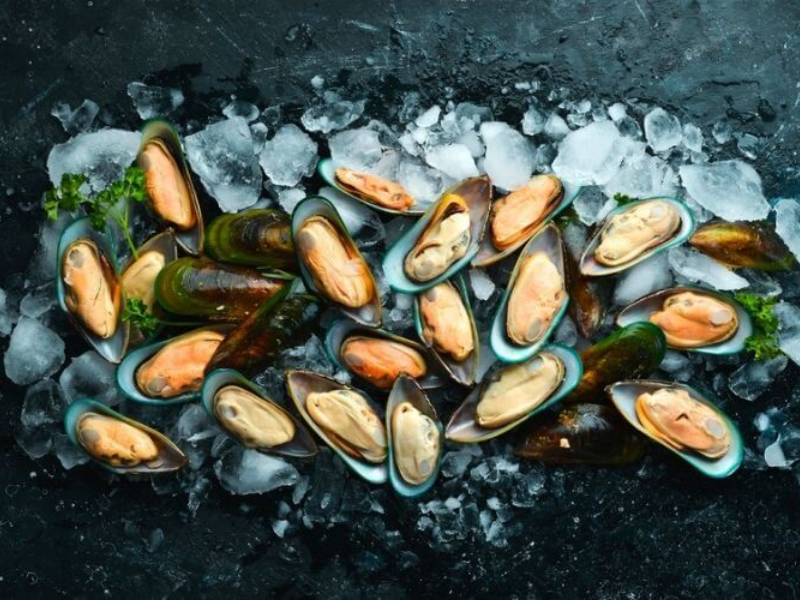
Green Mussels
Green mussels have significantly less of the umami flavor of black mussels. The reason people still choose green mussels is that they have this unique, mild savory seafood flavor that isn’t too overpowering. On top of this, they are also less salty and slightly sweeter.
On the other hand, in terms of texture, green mussels are quite spongy and firm. They remain meaty and tender even after cooking which makes them ideal to be steamed. In addition, green mussels can also be roasted, fried, and sauteed like black mussels.
In the end, personal preference still plays a major role when choosing the right type of mussel. It may also depend on the type of dish you will be preparing. Otherwise, green and black mussels alike are equally tasty and extremely flavorful.
General Comparison
Now that we have figured out the differences, maybe we can come closer to a conclusion as to which is the superior mussel.
In terms of affordability, black mussels are cheaper than green mussels. Black mussels are cheaper because of their commonality and availability while green mussels cost more because of their nativity to New Zealand, size, and seasonality.
As for availability, both mussels can be bought in different forms (fresh, canned, whole-shelled, half-shelled, meat-only, etc.) but black mussels are easier to find because they can be farmed anywhere, anytime. Green mussels, however, are seasonal and farmed mainly in New Zealand.
In the matter of flavor and texture, it all depends on personal preference and the food you are making.
Black mussels may be best used in dishes that need softer or more stronger-tasting meats. Green mussels can be used in dishes that need firmer meat. Green mussels are generally more preferred when you want mussels to balance flavor and not overpower the whole dish.
Comparison table
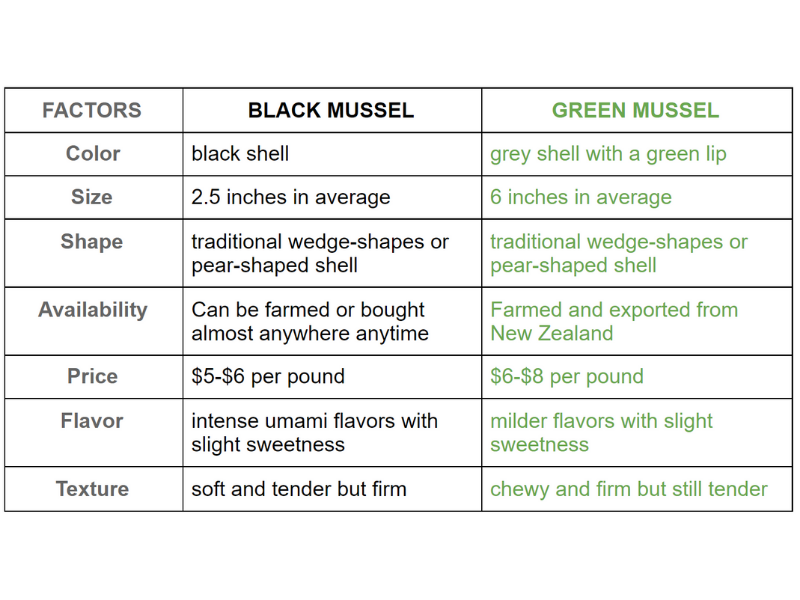
Black mussels:
- Color – black shell
- Size – 2.5 inches in average
- Shape – traditional wedge-shapes or pear-shaped shell
- Availability – can be farmed or bought almost anywhere anytime
- Price – $5-$6 per pound
- Flavor – intense umami flavors with a slight hint of sweetness
- Texture – soft and tender but firm
Green mussels:
- Color – gray shell with a green lip
- Size – 6 inches in average
- Shape – traditional wedge-shapes or pear-shaped shell
- Availability – farmed and exported from New Zealand
- Price – $6-$8 per pound
- Flavor – milder flavors with a slightly sweet taste
- Texture – chewy and firm but still tender
Related Questions
You now have a better understanding of the difference between black and green mussels. However, there might still be other questions burning in your mind.
So, take a look at some of the most commonly asked questions about mussels.
Mussel is a common term for members of various bivalve mollusk families found in both saltwater and freshwater environments. In comparison to their close relative, the clams, which are frequently more or less spherical or oval, mussels have a shell that is elongated and asymmetric.
“Mussel” means the bivalves of the marine family Mytilidae, which dwell on exposed coasts in foreshores or seashores and they hang onto rocks and other stable surfaces by their strong byssal threads or their beard.
Mussels are both delicious and nutritious. Besides being a good source of omega 3 fatty acids, zinc, and folate, mussels are an excellent source of selenium, iodine, and iron, and they surpass the recommended daily amount.
They are great for anemia prevention, maintaining heart health, and weight loss. Just be sure that you cook mussels properly to avoid food poisoning.
Mussels farmed within safe locations, handled and processed under hygienic facilities, are safe to be eaten raw by healthy people (after being properly cleaned beforehand like being marinated in acid marinade).
However, they can be dangerous and should only be consumed after thorough cooking for people who are sensitive to contaminants like cancer patients, diabetic individuals, or people who have digestive disorders.
Various risks come with eating shellfish such as mussels. These are some of them:
Risks
Shellfish poisoning
Mercury poisoning
Allergic reactions
Health problems
These health problems happen when you:
Mussels are eaten excessively
Eat mussels without cleaning them thoroughly
Eaten by people who are allergic to seafood.
Otherwise, mussels are safe to be consumed.

How should I clean mussels before cooking?
- Start opening your mussels immediately to let them breathe. Also, discard any chipped, damaged, dead, or already opened mussels.
- Soak them in cold water for twenty minutes and let the mussels clean the inside of their shells.
- After soaking, debeard your muscles and soak again in a new bowl of cold water.
- Lastly, clean off any barnacles and dirt on the shell with the dull side of a paring knife or a clean scrubbing brush.
- Do this under running water. Afterward, you can dry them with a paper towel.
Final words
In summary, black and green mussels have their pros and cons. They differ in some ways but the decision on which is more preferable is up to you.
If you’re looking for something cheaper and readily available, though smaller, yet still very flavorful, you can go for black mussels.
If you’re planning to make something a little fancier that requires a milder briny flavor, you can opt for green-lipped mussels. Whichever one you may choose, mussels are equally delicious and will satisfy your tastebuds with their fresh seafood flavors.
Next time, when you buy mussels you can consider these factors: affordability, availability, and flavor. What mussels can you afford, is available in your area, and fits the taste and texture of meat you are looking for?



